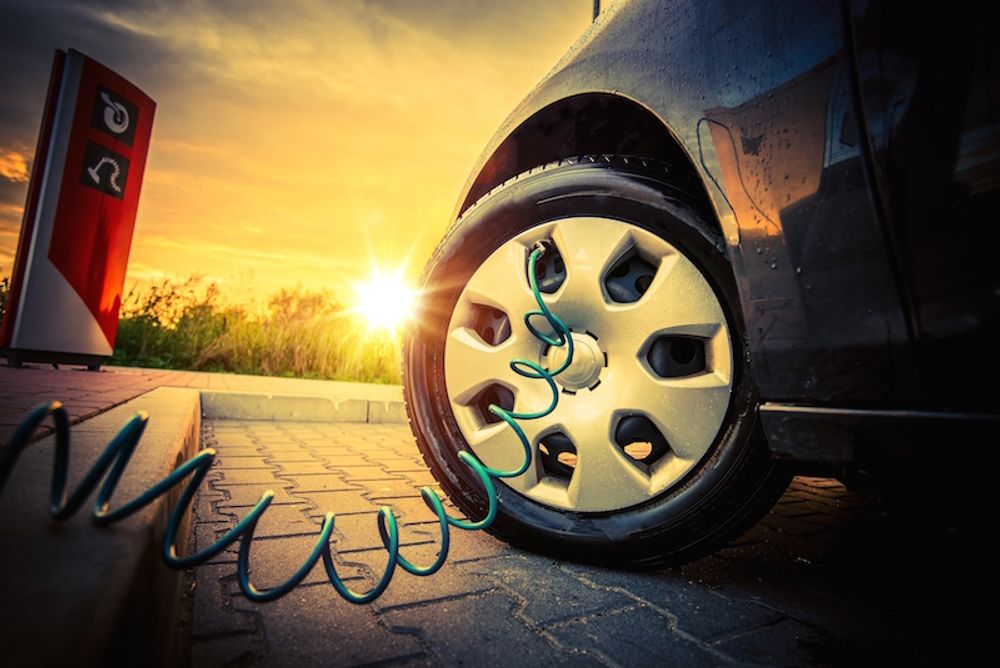Checking your tire pressure at least once per month is critical, especially during winter.
Deflated tires could mean you’re wasting money on gas. More importantly, they could put you and your passengers at greater risk of an accident.
It’s important to remember that tires are the only thing that stand between your car and the road beneath you. They are the old-fashioned version of the connected car! If any one of your tires gives, you could be in for a world of hurt or a long walk home. Especially if you don’t have roadside assistance or don’t know how to change a tire.
When tires are low on air, they cause greater drag and make your car work harder; this decreases your fuel efficiency, and puts an unnecessary drain on your wallet. But there’s a silver lining: checking your tire pressure is simple and doesn’t require an ounce of car-tech savvy. Here’s how:
Get yourself a tire-pressure gauge.
These can be picked up at any auto parts store and shouldn’t cost much more than $3.00. For about $15 you can get yourself a digital pressure gauge that may be easier to read. The drawback is that it’ll require you to keep a spare set of batteries on hand, especially when winter temps threaten to drain their charge. We recommend the less expensive, no-frills tire pressure gauge; that way, you can check your tire pressure any time.
Locate your tire’s valve stems.
If your vehicle has fancy after-market hubcaps, you may have to remove the hub caps to access your tire’s valve stems. Once you do, unscrew the cap; don’t worry – doing so won’t cause the air to escape. Put the caps in a safe place so you don’t lose them.
Check Your Tire Pressure
Insert the tip of the tire pressure gauge firmly into the tire’s valve stem. If you’re using a cheapo, no-frills tire gauge, the tip of the gauge will pop up and give you a reading on the amount of pressure, measured in pounds per square inch, or PSI, in your tire.
Are you in a pinch and without a tire-pressure gauge? Many air pumps these days have built-in gauges built into the nozzle. Most gas and service stations have air pumps, so if you drive to a handful of them (assuming there are several nearby), odds are you’ll locate one with a built-in gauge.
Don’t Eyeball It
If there’s no gauge attached and you’re not sure if you need to add air pressure, don’t. Eyeballing how much air pressure is in your tire is a bad idea. If you inadvertently over-inflate, you could put yourself at risk for a blow out – not the ‘great hair’ kind, the ‘see the torn tires along the side of the highway’ kind – you don’t want that happening, especially not at high speeds. You also risk warping, which could weaken your tires’ sidewalls, seriously compromising safety, and potentially lining you up for a pricey tire replacement.
Look for the Right Pressure
Not sure how many PSI your tires require? You can usually find it in three places –
- A sticker, placed by your manufacturer, on the inside of the driver-side door.
- Your vehicle owner’s manual – we know, it’s the least-read item out there, but you should be able to quickly locate your tires’ recommended PSI via the index.
- The sidewall of your tire will often indicate the maximum recommended pressure. This may be slightly higher than your manual recommends, because tires deflated only slightly from maximum capacity offer a smoother ride.
If those three locations indicate conflicting recommended PSI, err on the cautious side and lower the pressure slightly.
Inflate Those Tires
Inflate away, and if the air pump doesn’t have an auto-PSI gauge, pull the pump and re-check the pressure frequently to confirm you haven’t over-inflated. Check all tires to be sure each one’s pressure is as recommended (and note that some vehicles will require different PSI for front and rear tires).
When in Doubt, Pull into a Mechanic
When in doubt, pull into a car repair shop. Many mechanics will give you a complimentary tire-pressure inspection. They know that those couple of minutes go a long way to create goodwill and demonstrate their trustworthiness.
Anytime you’re looking for a trustworthy mechanic, use Openbay, to compare pricing and book service with the best shop near you.

